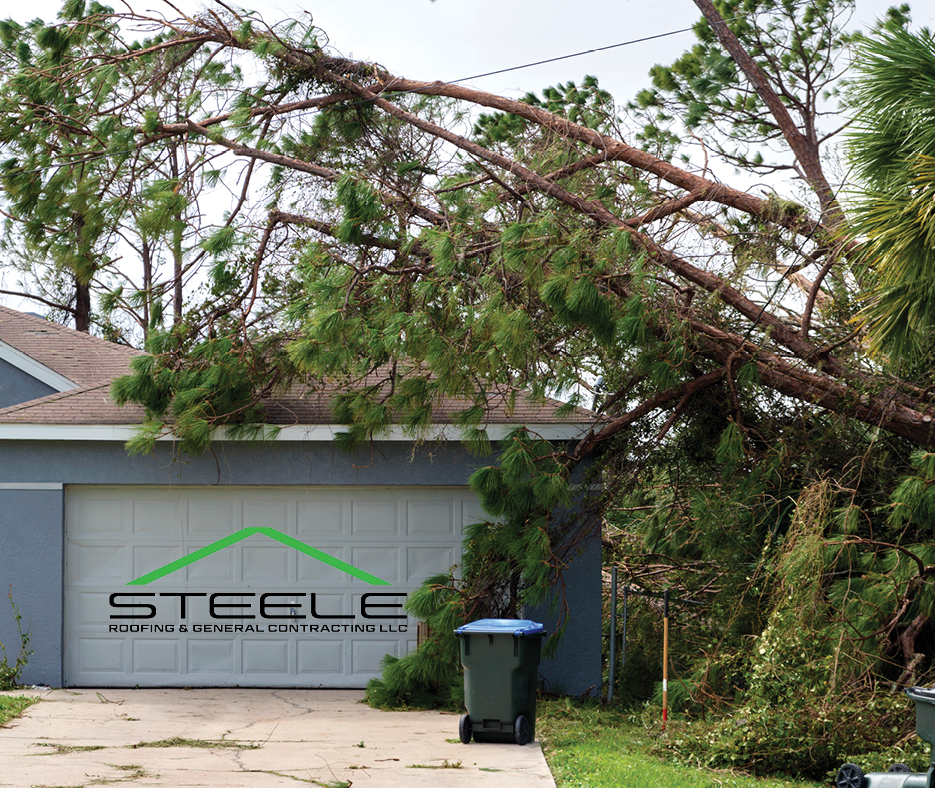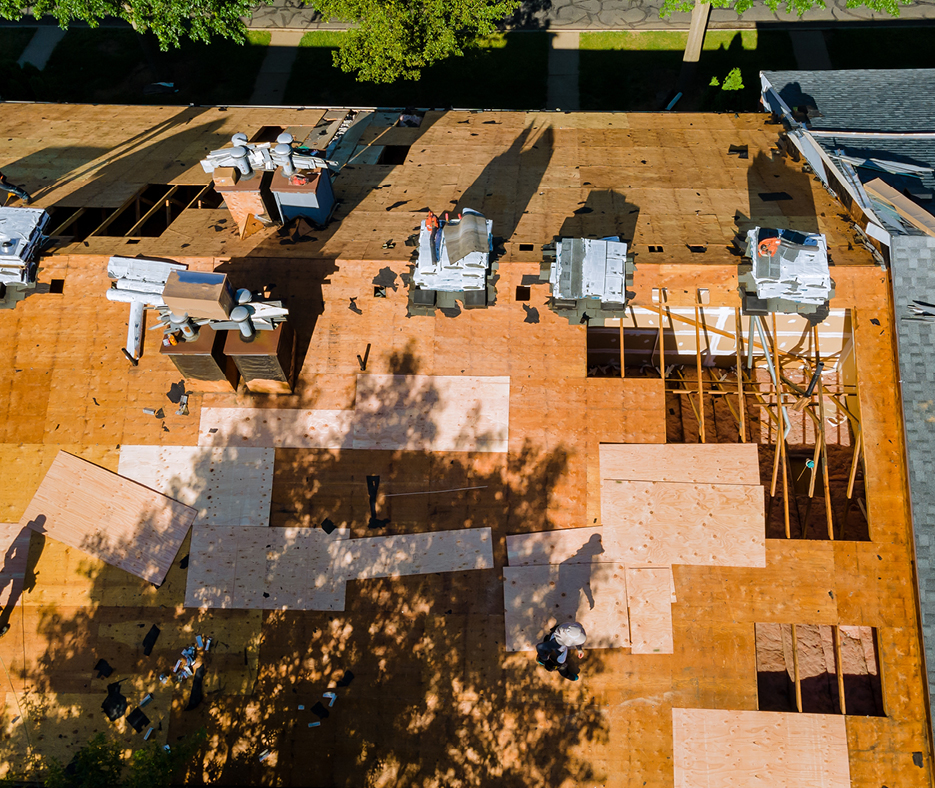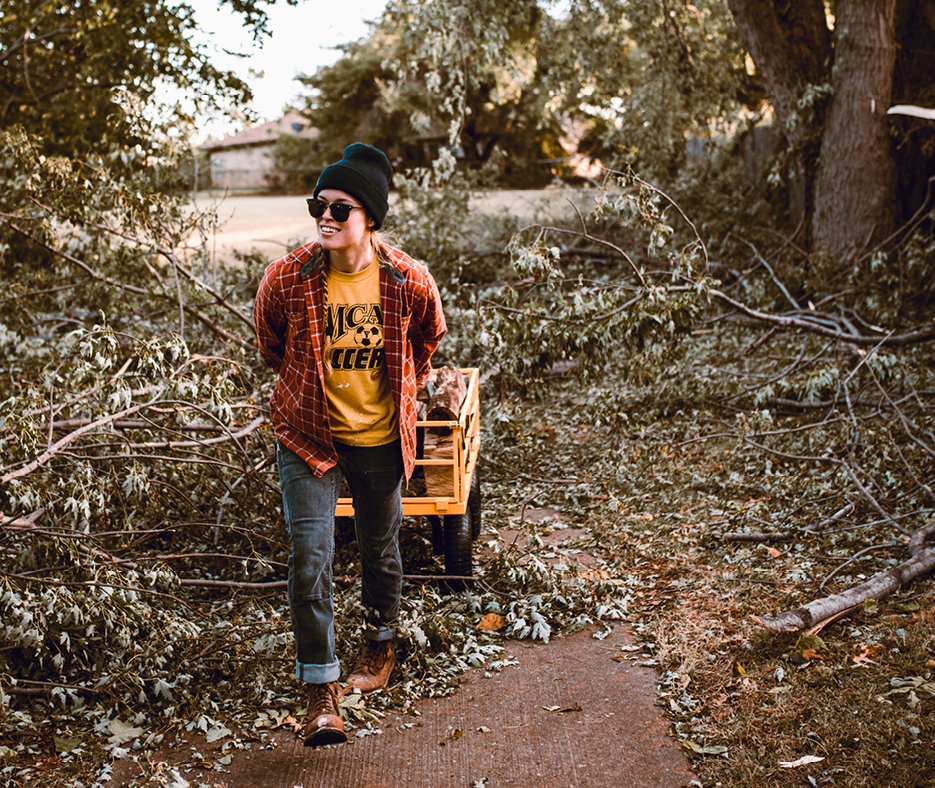How to Handle an Emergency Roof Situation: 5 Steps
August 10, 2023 Admin

Especially in weather-prone places like East Texas, the elements can be tough on your roof.
Roof damage can result from a range of sources: everything from a tornado, hurricane, or wind roof damage; hail damage; long- or short-term water damage; pests (squirrels especially!); lightning; or tree debris.
As an experienced local roofing company in East Texas, Steele Roofing has seen just about every type of emergency roof situation you can imagine.
It can be as mundane as mold or mildew, water stains, warped wood, or misplaced shingles.
Or an emergency roof situation can be as serious as a gaping hole in your roof after a tornado.
While there are different levels of “emergency,” any time you notice potential damage to your roof, it’s important to call a trusted local roofing company to perform an inspection, give you an estimate for the cost of roof repairs, and handle whatever emergency roof tarping or roof repairs need taking care of.
It can be difficult to know what to do in an emergency situation. Here’s a list of how to handle an emergency roof scenario:

1. Check for Damage—Safely!
It’s important to do a basic assessment of what type of damage your roof has sustained, but please wait for a professional roof inspection from an experienced roofing company.
If at all possible, check for damage from the ground. For your safety, it’s important to leave the full storm damage roof inspection to those who are trained and experienced. This is especially true if there’s obvious damage from wind and debris—you could be putting yourself in danger by getting onto the roof.
Check the ground for displaced shingles, which are an obvious indicator to contact a local roofing company and have them make a damage assessment as soon as possible. You can also check such things as: Are the gutters displaced? Is there tree debris on the roof?
If you notice these details, it’s important to have an inspection. Even if it doesn’t look too bad, especially if your roof went through serious wind and rain, you might have damage.
If you don’t address the damage, you could be in for more expensive repairs or even the necessity of a new roof down the road.
2. Documentation
Once you’ve determined you have damage and may need emergency repairs, an important step that too often gets lost in the shuffle is to document the damage. This can be incredibly helpful and even necessary for your insurance company.
Take detailed photos and video footage of all damage before any cleanup happens. This is also a way to prove to your insurance company that the damage happened when you said it did.
Once you have everything documented, it’s a good idea to get in touch with your insurance company and obtain guidance on how to proceed.
3. Call in the Professionals
There are so many obvious and not-so-obvious ways a roof could sustain damage and need emergency services, especially emergency roof tarping.
The safest way to know for sure is to call in a professional roofer and have them use their experience and state-of-the-art equipment to diagnose and fix the problem. Even if you have experience with roofs, when it comes to an emergency, the best course of action is to allow the professionals to handle it.
 4. Cleanup Time
4. Cleanup Time
Depending on the severity of the storm and the damage to your roof, while you’re waiting for the local professional roofers to come and assess the damage, it’s a good idea to mitigate further problems and, especially for safety’s sake, clean up any debris. But make sure you have photo documentation first!
Be especially careful of any potential electric hazards, nails, other sharp debris, and anything that might fall from above.
If you’re experiencing a lot of water leakage inside, make sure you put out buckets or other containers to catch the water and keep it from spreading. You can also use towels and rags to mop up standing water, but make sure you don’t leave them wet or damp on the floor, which could cause cosmetic and structural issues.
5. Be Patient (If Possible)
Especially if your area has sustained a lot of damage from a big storm or tornado, it’s possible your local roofer won’t be able to get to your house immediately.
While it might be tempting to climb up a ladder and onto the roof to do some emergency roof tarping yourself, attempting to tarp any large holes in your roof can be difficult and very dangerous. Leave the tarping to the professionals if possible and stay safe until they arrive.
No matter the circumstances, the safety of you and your family is what’s most important. When it comes to handling an emergency roof situation, it’s always best to call in a local professional roofer like Steele Roofing to safely inspect, diagnose, and fix your roofing emergency.



 4. Cleanup Time
4. Cleanup Time